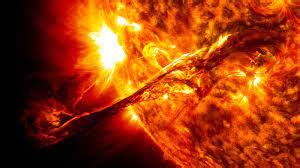Carrington EventCarrington Event
Explore
The Carrington Event was a remarkable solar storm that occurred in September 1859. Let’s delve into the details:
Geomagnetic Storm:
The Carrington Event is considered the most intense geomagnetic storm in recorded history.
It occurred from September 1 to 2, 1859, during solar cycle 10.
The storm resulted from a coronal mass ejection (CME) from the Sun colliding with Earth’s magnetosphere.
Geomagnetic storms occur when charged particles from the Sun interact with our planet’s magnetic field, causing disturbances.
Auroras and Telegraph Stations:
The event caused strong auroral displays visible globally.
Telegraph stations experienced sparking and fires due to induced currents from the geomagnetic storm.
The intense solar activity disrupted communication systems, particularly telegraph lines.
Solar Flare Discovery:
On September 1, 1859, British astronomers Richard Christopher Carrington and Richard Hodgson independently observed and recorded the earliest observations of a solar flare.
This solar flare was associated with the Carrington Event.
It was the first recorded instance of a solar flare, marking a significant milestone in solar physics.
Impact Today:
If a geomagnetic storm of this magnitude were to occur today, it would cause widespread electrical disruptions, blackouts, and damage due to extended outages of the electrical power grid1.
Fortunately, modern technology allows us to monitor solar activity and take precautions to mitigate such effects.
In summary, the Carrington Event serves as a reminder of the Sun’s powerful influence on our planet and the importance of understanding space weather for our technological infrastructure

Leave a comment